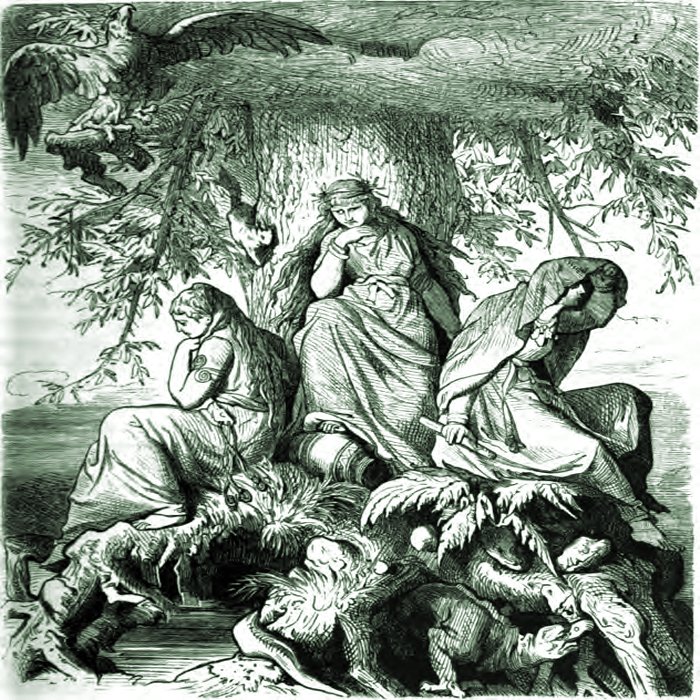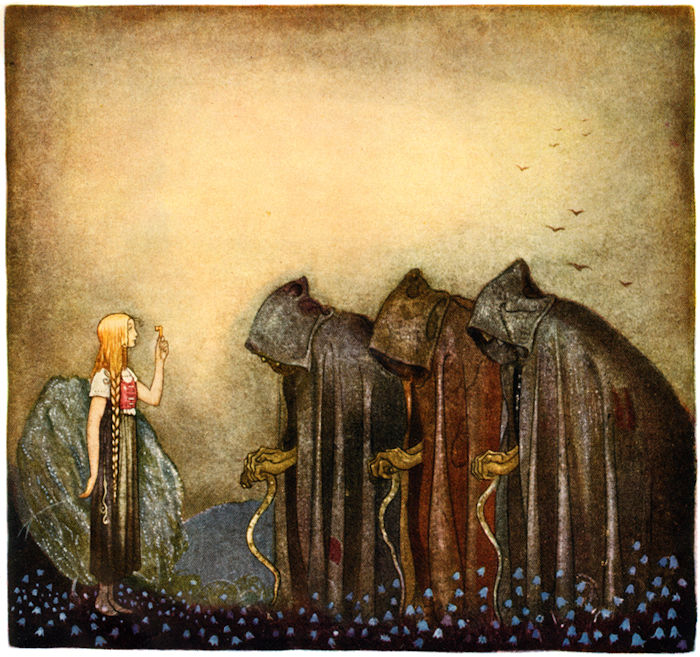The Norns – Shapers Of Destiny Who Recorded Days In Person’s Life In Norse Mythology
A. Sutherland - AncientPages.com - In Old Norse mythology, the Norns were 'Shapers of Destiny.' These goddesses ruled the fates of people and determined individuals' destinies and lifespans.
The Norns were the equivalent of the Greek Moirai ('the Fates), responsible for destiny and personification of a single, unavoidable fate.
The Norns Urðr, Verðandi, and Skuld under the world oak Yggdrasil. Illustration, 1882 by Ludwig Burger via Wikipedia
The Aesir gods had a wonderful life before these three mysterious female beings arrived. At first, they built Asgard and then enjoyed springtime and peaceful days. When the Golden Age ended, the three Norns came from Jotunheimr, a location associated with the Jötnar (giants) in Norse mythology.
Three principal and very powerful Norns lived in the mysterious well of Urd ('fate'), which had its location beneath one of the roots of the giant ash tree - Yggdrasil (World Tree"), which formed a column linking the realms of the gods, humankind, the giants and the dead.
The names of these most powerful creatures in Norse mythology were: Urd, which means What once was. This root was named Urd, while the others were Verdandi ('being') and Skuld ('necessity'). Verdandi means What is coming into being, and Skuld means What shall be.
Urd was responsible for the past. She was considered benevolent and blessed people and identified with the arriving moon.
Guldnyckeln by John Bauer (1882–1918). Credit: Public Domain
Verdandi was responsible for the present and identified with the full lunar moon. Verdandi was also considered a benevolent goddess. Skuld, on the other hand, was responsible for the future.
The youngest of the Norns was believed to be cruel and merciless. She decided the life expectancy of the born children and personified the Dying Moon. But there were also other Norns, benevolent (of divine lineage), who could influence lives positively and malevolent, who had enough power to reverse a person's fortune and send nightmares.
According to the Völuspá ( Old Norse: "Sibyl's Prophecy") poem consisting of about 65 short stanzas on Norse cosmogony, the history of the world of gods, men, and monsters from its beginning until the Ragnarok ("Doom of the Gods"), the Norns' cut on wood', which probably means that they used to carve magical runes on the trunk of the sacred Yggdrasil.
The custom of recording dates and numbers of days and years by cutting notches into the wooden walls of the home – is ancient in Norway. The Norns could also record the days in a person's life.
According to Gylfaginning, other Norns, both benevolent and malevolent, had enough power to reverse a person's fortune.
The Norns had a custom to visit each newly born child to determine events in its life. A specific runic inscription discovered in a church in Borgund in Norway informs as follows:
"The Norns determine good and bad things, and they have brought great sorrow to me…" (also translated as follows: "The Norns have done both good and evil." No one had as much power and wisdom as they did.
Who were these mysterious supernatural females? They differed in their origin, and they may have come from dwarves (as the daughters of the dwarf Dvalin), giants, elves, and the Aesir themselves.
The Norn's origin explains a person's quality of life and fortune, believed to protect the individual.
The Norns are mentioned in countless passages in ancient Scandinavian literature, and strong faith in these beings continued long after the introduction of Christianity.
Updated on January 20, 2024
Written by A. Sutherland - AncientPages.com Staff Writer,
Copyright © AncintPages.com All rights reserved. This material may not be published, broadcast, rewritten or ,redistributed in whole or part without the express written permission of AncientPages.com
More From Ancient Pages
-
 On This Day In History: Unbelievable Flight Took Place – On Apr 28, 1939
News | Apr 28, 2016
On This Day In History: Unbelievable Flight Took Place – On Apr 28, 1939
News | Apr 28, 2016 -
 Mystery Of The Neanderthals – Search For Traces Of Neanderthals’ Lives And Hints Of Their Demise
Archaeology | Sep 26, 2022
Mystery Of The Neanderthals – Search For Traces Of Neanderthals’ Lives And Hints Of Their Demise
Archaeology | Sep 26, 2022 -
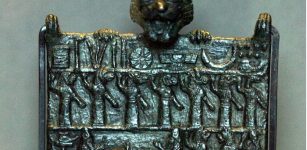 Lamashtu Plaque: Assyrian Healing Device Against The Evil Goddess
Artifacts | Mar 16, 2023
Lamashtu Plaque: Assyrian Healing Device Against The Evil Goddess
Artifacts | Mar 16, 2023 -
 Ptolemaic Granite Sarcophagus Found In Alexandria, Egypt
Archaeology | Jul 6, 2018
Ptolemaic Granite Sarcophagus Found In Alexandria, Egypt
Archaeology | Jul 6, 2018 -
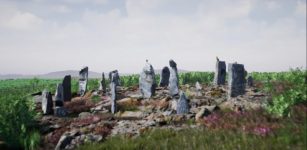 Star-Shaped Magnetic Anomaly At Hidden Stone Circle In The Outer Hebrides Gives New Insight Into Ancient Beliefs
Archaeology | Jan 2, 2020
Star-Shaped Magnetic Anomaly At Hidden Stone Circle In The Outer Hebrides Gives New Insight Into Ancient Beliefs
Archaeology | Jan 2, 2020 -
 Unraveling The Mystery Of The Celestial Matrix
Featured Stories | Sep 30, 2021
Unraveling The Mystery Of The Celestial Matrix
Featured Stories | Sep 30, 2021 -
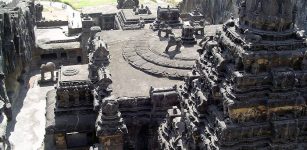 Cannabis Protected India’s Famous Ellora Caves From Decay For 1,500 Years
Archaeology | Mar 12, 2016
Cannabis Protected India’s Famous Ellora Caves From Decay For 1,500 Years
Archaeology | Mar 12, 2016 -
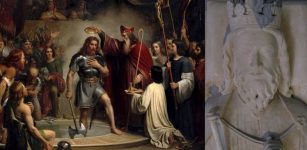 Merovingian Dynasty Of Long Haired Kings
Featured Stories | Jan 18, 2019
Merovingian Dynasty Of Long Haired Kings
Featured Stories | Jan 18, 2019 -
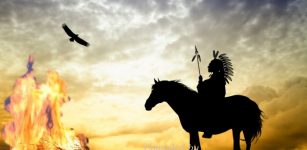 Seven Fires Prophecy Of The Anishinaabe People And The Future Of The Turtle Island – Are Humans Standing At The Crossroads?
Featured Stories | Feb 14, 2019
Seven Fires Prophecy Of The Anishinaabe People And The Future Of The Turtle Island – Are Humans Standing At The Crossroads?
Featured Stories | Feb 14, 2019 -
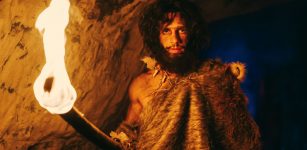 Neanderthals May Have Been Carnivores – New Study
Archaeology | Oct 17, 2022
Neanderthals May Have Been Carnivores – New Study
Archaeology | Oct 17, 2022 -
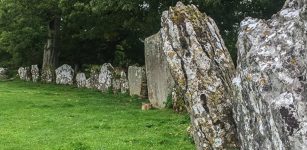 ‘Lios na Grainsi’ – Ireland’s Largest Stone Circle
Civilizations | Feb 3, 2016
‘Lios na Grainsi’ – Ireland’s Largest Stone Circle
Civilizations | Feb 3, 2016 -
 Mabon Festival And The Autumn Equinox Celebrated By Pagans
Ancient Traditions And Customs | Sep 20, 2019
Mabon Festival And The Autumn Equinox Celebrated By Pagans
Ancient Traditions And Customs | Sep 20, 2019 -
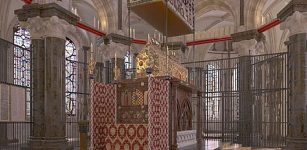 Stunning CGI Reconstruction Of Saint Thomas Becket’s Shrine
Archaeology | Jul 7, 2020
Stunning CGI Reconstruction Of Saint Thomas Becket’s Shrine
Archaeology | Jul 7, 2020 -
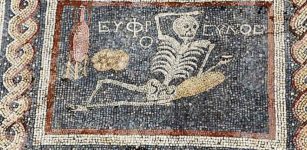 ‘Skeleton Mosaic’ – 2,400-Year-Old Scenes Depicted On Glass Artwork Found In Turkey
Archaeology | Apr 23, 2016
‘Skeleton Mosaic’ – 2,400-Year-Old Scenes Depicted On Glass Artwork Found In Turkey
Archaeology | Apr 23, 2016 -
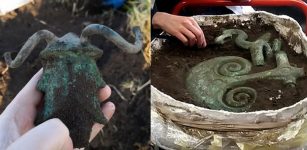 Mysterious Kallerup’s Double-Headed Figurine – Evidence Of Unknown Norse God Or Worship Of Roman God Janus In Ancient Scandinavia?
Artifacts | Mar 19, 2020
Mysterious Kallerup’s Double-Headed Figurine – Evidence Of Unknown Norse God Or Worship Of Roman God Janus In Ancient Scandinavia?
Artifacts | Mar 19, 2020 -
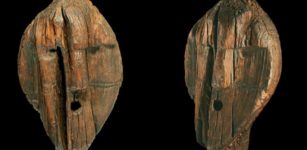 Does The Shigir Idol Depict Demons And Evil Spirits?
Archaeology | May 3, 2018
Does The Shigir Idol Depict Demons And Evil Spirits?
Archaeology | May 3, 2018 -
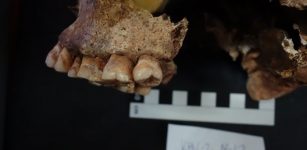 Milk Enabled Massive Steppe Migration
Archaeology | Sep 15, 2021
Milk Enabled Massive Steppe Migration
Archaeology | Sep 15, 2021 -
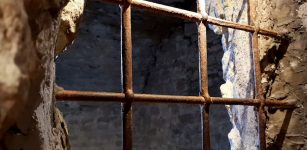 New Study Sheds Light On The Phenomenon Of Female Jewish Slavery And Uncovers Gang Rape In Livorno’s Slave Prison
Archaeology | May 18, 2022
New Study Sheds Light On The Phenomenon Of Female Jewish Slavery And Uncovers Gang Rape In Livorno’s Slave Prison
Archaeology | May 18, 2022 -
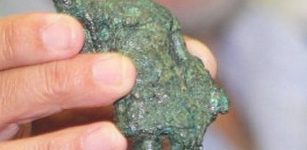 Unique Figurine of Roman God Mars Unearthed In Bulgaria
Artifacts | Aug 22, 2015
Unique Figurine of Roman God Mars Unearthed In Bulgaria
Artifacts | Aug 22, 2015 -
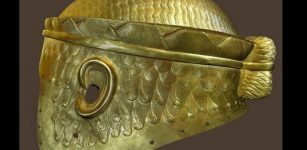 Helmet Of Meskalamdug – Sumerian King Of The First Dynasty Of Ur
Artifacts | Apr 14, 2016
Helmet Of Meskalamdug – Sumerian King Of The First Dynasty Of Ur
Artifacts | Apr 14, 2016

